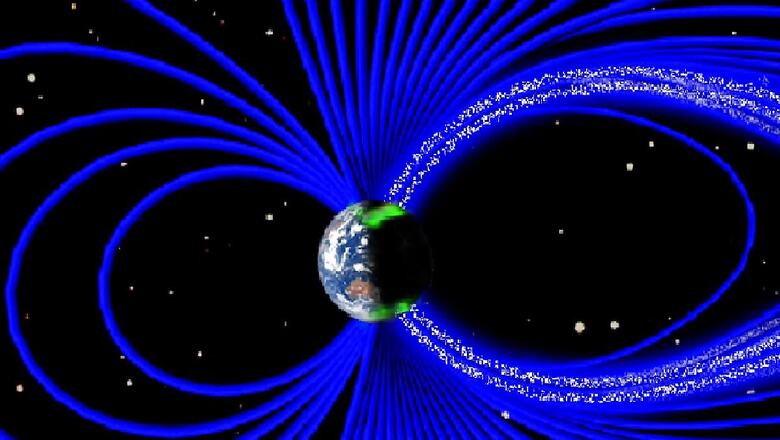
views
The Earth’s magnetic field serves as the planet’s primary shield, protecting it from the Sun’s strong cosmic radiation. However, recent research claims that the Earth’s magnetic field dissipated some 590 million years ago, creating ideal circumstances for early life to thrive. In their recent research, University of Rochester, US, Earth scientist Wentao Huang and colleagues write that “Earth’s magnetic field was in a highly unusual state when macroscopic animals of the Ediacara fauna diversified and thrived”.
Previous research has proven that multicellular life first appeared on Earth around 565 million years ago (the Ediacaran epoch). This phase happens to coincide with the time when our planet’s magnetic field collapsed to its lowest point. However, we know that the magnetic field is there to shield humans from solar winds. So, how did its absence promote life on Earth?
Scientists found crystals in igneous rocks from South Africa that formed billions of years ago, as well as additional 591-million-year-old rocks from Brazil. It is important because as these rocks form, they retain the intensity of the Earth’s magnetic field.
The researchers discovered that the magnetic field reached its lowest point 500 million years ago when it was 30 times weaker than it is today. The low magnetic field period lasted roughly 26 million years, during which time our planet experienced a surge in species. “The new data confirming and extending the UL-TAFI strengthen a potential linkage with the Ediacaran evolution of macroscopic animals,” Earth scientist Huang and colleagues wrote in the research paper.
The reduced magnetic field, the scientists suggest, may have allowed more hydrogen ions to escape from Earth’s atmosphere into space, potentially resulting in higher oxygen levels in the oceans and skies. According to the researchers, higher oxygen levels led to an explosion in biodiversity.
“A complex animal ecosystem involving long food chains and predators requires still greater amounts of oxygen, as indicated by the exclusion of such complex ecosystems from the modern oxygen minimum zone,” the research paper added.
Still, how did the organisms manage to avoid the solar winds’ fury? Scientists believe that the Earth’s atmosphere and oceans may have operated as a barrier for early life forms. Those huge animals that walked on land, without the protective protection of seas, may have reached an evolutionary dead end during this stage.




















Comments
0 comment